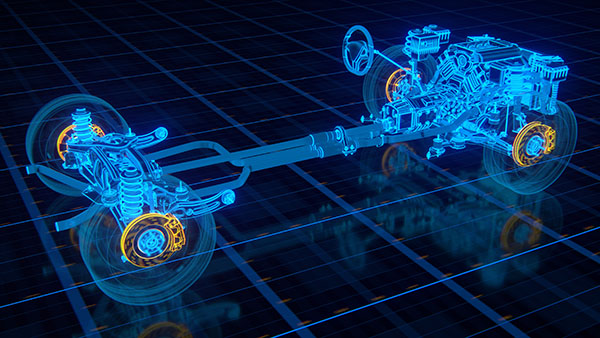Posted on 12/22/2023
.jpeg)
Uncomfortable temperatures can transform your car from a cozy haven to an unpleasant environment. Imagine setting out for a summer road trip, only to find the cool breeze of your air conditioning has turned into a mere puff of hot air. Or imagine you're trying to defrost your windshield on a frosty winter morning, but your heater decides it won't cooperate. These are tell-tale signs that your vehicle's A/C and heating system could be in distress. 1. Weak Airflow If you've cranked up the A/C or heater and the airflow feels as weak as a gentle whisper, it's time to pay attention. Blockages in the hoses, mold or mildew accumulation from residual moisture, or a tired ventilation fan can all lead to this issue. 2. Unusual Noises When you switch on the climate control and hear rattling, banging, or whistling sounds ... read more
Posted on 11/28/2023
.jpeg)
As a driver, understanding the diagnostic codes of your car can ensure its health and well-being. Every code is like a key that unlocks the secrets of your vehicle's performance. We are on a mission to decode the most common error codes, breaking them down segment by segment and giving you insights to navigate potential issues with empathy and understanding. Our goal is to empower you to be knowledgeable about your car's performance and to provide you with the tools you need to keep it running smoothly. So, why not join us on this journey towards becoming a more informed and empowered driver? Engine-Related Error Codes Your vehicle's engine is a complex symphony of moving parts, and sometimes, it speaks to you through diagnostic codes. Let's explore some common engine-related error codes and what they mean. P ... read more
Posted on 10/27/2023

Your vehicle's suspension system plays a crucial role in ensuring a smooth and safe ride. However, like any mechanical system, it's not immune to wear and tear. If you've ever wondered what the most commonly broken component in the suspension system is, you're in the right place. The Suspenseful Component - Ball Joints Ball joints - these small yet crucial components are responsible for connecting various parts of the suspension to the wheel hub, allowing for smooth movement and control of the vehicle. Unfortunately, ball joints are also among the most commonly broken components in the suspension system. Why Ball Joints Break Several factors contribute to the wear and eventual failure of ball joints, including normal wear and tear. Over time, ball joints experience stress and constant movement, resulti ... read more
Posted on 9/29/2023

Toyota Corolla owners, whether you're a loyal enthusiast or a first-time driver, you've chosen a reliable and iconic car. Its reliability is second to none, making it a popular choice amongst people who are looking for a dependable sedan - whether for their family or just as a daily commuter. But how reliable can it really be? After all, isn't it a car just like any other? While it is one of the best options on the market, it also experiences problems and malfunctions from time to time. The Usually Transmission IssuesOne of the recurring issues in Corollas is transmission problems, particularly in models produced between 2014 and 2017. To avoid this, stick to regular transmission fluid changes, usually recommended every 30,000 miles. This simple maintenance step can extend your transmission's lifespan significantly, especially ... read more
Posted on 8/30/2023

The allure of off-road adventures, improved traction, and enhanced handling has made four-wheel drive (4x4) vehicles a popular choice among enthusiasts and adventurers alike. But have you ever wondered how the power is distributed to all four wheels, enabling these vehicles to conquer diverse terrains? The Basics of Four-Wheel DriveIn a 4x4 vehicle, power is distributed to all four wheels to improve traction, stability, and overall performance. Unlike traditional two-wheel drive (2WD) vehicles, where power is sent to either the front or rear wheels, 4x4 systems provide the flexibility to engage all four wheels when needed. This is especially beneficial for challenging conditions such as slippery surfaces, steep inclines, or uneve ... read more